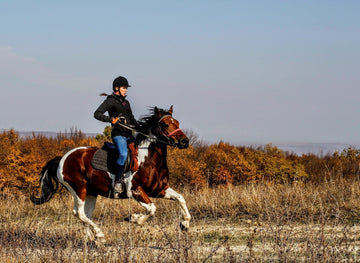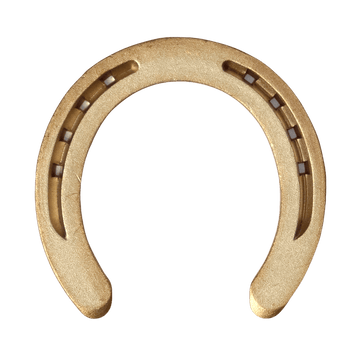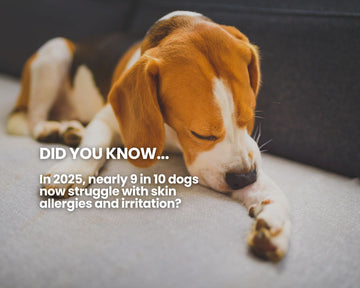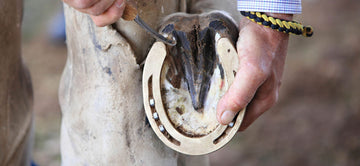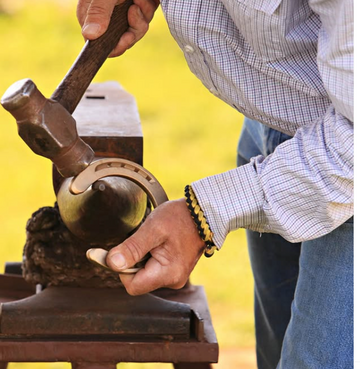Equine rain rot, a common and frustrating condition for horses, is a skin infection caused by the bacterium Dermatophilus congolensis. This infection thrives in warm, humid environments, particularly during periods of heavy rainfall.
While not life-threatening, rain rot can cause significant discomfort, hair loss, and skin damage if not properly treated.
In this article, we will explore the symptoms, causes, treatments, prevention strategies, and recovery process for rain rot in horses.
Understanding Rain Rot
Rain rot, also known as rain scald or dermatophilosis, primarily affects horses during wet weather conditions. The bacteria responsible for rain rot, Dermatophilus congolensis, flourishes in environments with high humidity and constant moisture, leading to infection.
The bacteria invade the skin’s outer layers, causing scabs to form. These crusty scabs can cause hair loss, itching, and painful sores.
Although rain rot is not life-threatening, it can have lasting effects on a horse’s skin and coat health. If left untreated, it can lead to more severe skin damage, scarring, and potential hair regrowth issues. It’s crucial to recognize and address the condition early to ensure a quick recovery.
Regular grooming and inspection of the horse's coat and skin are essential to detect early signs of rain rot and ensure timely treatment.
Symptoms and Causes of Rain Rot
Rain rot manifests in several distinct ways:
Horses may develop scabs and crusts on their skin, which can be painful and lead to hair loss. The affected areas often include the back, rump, and legs. The condition is caused by the bacterium Dermatophilus congolensis, which thrives in wet and humid environments.
Horses with poorly developed immune systems are at a higher risk of developing rain rot, especially during wet conditions.
Symptoms of Rain Rot
-
Patchy Hair Loss: The infection typically causes hair to fall out in patches, often along the back, topline, or lower legs.
-
Crusts or Bumps: Crusty scabs or raised bumps appear on the skin, usually where the infection has spread.
-
Itching or Discomfort: The affected areas can be itchy or sore, especially if they coincide with places where tack sits.
-
Skin Breakdown: Prolonged exposure to moisture breaks down the skin’s protective outer layer, making it more susceptible to damage.
These symptoms are often exacerbated by wet conditions and poor hygiene. Horses that are constantly exposed to the elements or kept in damp, muddy stalls are more prone to developing rain rot.
Proper care and attention can help mitigate these risks. Horse owners should regularly check their horse's coat for signs of equine rain rot, such as swelling or cuts, to ensure early detection and treatment.
Diagnosis of Rain Rot
Diagnosing rain rot in horses can be straightforward, but it’s essential to consult with a veterinarian to confirm the condition and rule out other potential skin issues. Here are the steps typically involved in diagnosing rain rot:
-
Physical Examination: A veterinarian will conduct a thorough physical examination of your horse, focusing on the affected areas of the skin. They will look for characteristic signs of rain rot, such as crusty scabs, hair loss, and raised bumps.
-
Medical History: The veterinarian will inquire about your horse’s medical history, including any previous skin conditions, allergies, or recent exposure to wet weather and biting insects. This information helps in understanding the context and potential causes of the skin infection.
-
Skin Scraping: To identify the presence of the Dermatophilus congolensis bacteria, a skin scraping may be taken. This involves gently scraping the affected skin to collect cells for microscopic examination.
-
Biopsy: In some cases, a skin biopsy may be performed to confirm the diagnosis and rule out other skin conditions. A small sample of the affected skin is taken and examined in a laboratory.
-
Laboratory Tests: Additional laboratory tests, such as bacterial cultures or PCR (polymerase chain reaction) tests, may be conducted to detect the presence of the bacteria. These tests provide a definitive diagnosis and help guide the treatment plan.
Early diagnosis is crucial in treating rain rot effectively. If you suspect that your horse has contracted rain rot, it’s essential to consult with a veterinarian as soon as possible. Prompt treatment can prevent the condition from worsening and ensure a quicker recovery.

How to Treat Rain Rot
Step-by-Step Treatment for Rain Rot
Rain rot treatment can typically be done at home, especially if the condition is caught early. The treatment process involves several steps:
-
Clean the Affected Area:
-
Gently shampoo the affected areas using Equiderma Neem Shampoo or any mild, antibacterial, or antifungal horse shampoo. This will help remove scabs and debris.
-
Avoid scrubbing harshly, as it may irritate the skin further. Always rinse thoroughly to remove all soap residue.
-
-
Apply Equiderma Skin Lotion:
-
After cleaning, apply Equiderma Skin Lotion or a similar product designed for rain rot. Leave the lotion on the affected area. It helps soothe the skin and provides antimicrobial protection.
-
-
Shampoo the Area Again:
-
On day two, wash the area gently again with a horse shampoo. This helps remove any remaining scabs and allows the skin to heal faster.
-
-
Continue Monitoring and Grooming:
-
Groom the affected areas daily to remove loose scabs and ensure cleanliness. This also promotes air circulation and speeds up the healing process.
-

Treatment Options
Several treatments can help manage and resolve rain rot effectively:
-
Medicated Shampoos and Wipes: These are often the first choice and contain ingredients like chlorhexidine or benzoyl peroxide, which help reduce bacteria and fungi on the skin.
-
Topical Antibiotic Creams: These can help treat more severe cases and prevent the infection from spreading.
-
Analgesics: If your horse is in significant pain, consult your veterinarian for NSAIDs (non-steroidal anti-inflammatory drugs) to manage discomfort.
-
Regular Grooming: Keep the skin dry and clean by grooming regularly, particularly in moist conditions. Dry the horse’s coat after exposure to rain or humidity.
Preventing Rain Rot
The best way to keep your horse healthy is by preventing rain rot from occurring in the first place. Here are several key preventive measures:
To prevent rain rot, ensure your horse's living conditions are dry and practice good grooming habits. Rain rot prevention is essential to maintain your horse's skin health and avoid potential infections.
Keep Your Horse Dry
-
Shelter: Ensure your horse has access to shelter during wet weather. Stabling or a covered shelter helps reduce prolonged exposure to moisture.
-
Blanketing: When appropriate, use waterproof blankets to keep your horse’s coat dry. Make sure to check the blanket regularly for wetness and clean it often to avoid reinfection.
Grooming and Hygiene
-
Daily Grooming: Regular grooming removes dirt, sweat, and moisture from the horse’s coat, preventing bacterial buildup.
-
Clean Stalls: Keep the horse’s living area dry and clean. Moist bedding can increase the likelihood of skin infections.
Nutrition and Skin Health
A horse’s diet plays a significant role in maintaining healthy skin and preventing conditions like rain rot. A well-balanced diet rich in essential nutrients can bolster the immune system and enhance skin health.
Here are some key nutrients that support a healthy coat and skin:
-
Omega-3 Fatty Acids: These anti-inflammatory fatty acids help reduce skin inflammation and promote overall skin health. They can be found in flaxseed, fish oil, and certain supplements designed for horses.
-
Vitamin E: This powerful antioxidant helps protect the skin from damage caused by free radicals. Adequate levels of vitamin E are crucial for maintaining healthy skin and coat. It is commonly found in green leafy forages and certain grains.
-
Zinc: An essential mineral, zinc supports skin health and helps regulate the immune system. It plays a vital role in wound healing and maintaining the integrity of the skin. Zinc can be found in fortified feeds and supplements.
-
Biotin: A B-complex vitamin, biotin is essential for maintaining healthy skin, hair, and hooves. It supports the production of keratin, a key protein in the skin and hair. Biotin is often included in hoof and coat supplements.
In addition to a balanced diet, providing your horse with access to clean water, adequate shelter, and regular exercise is crucial for maintaining healthy skin.
Regular grooming and skin care practices, such as keeping the horse dry and clean, can also help prevent skin infections like rain rot. By ensuring your horse receives proper nutrition and care, you can significantly reduce the risk of rain rot and other skin conditions.
Nutrition
-
Balanced Diet: Horses with compromised immune systems are more prone to infections. Ensure your horse receives a balanced diet rich in vitamins and minerals to support skin health.
Managing Rain Rot Recovery
Once treatment has begun, it’s important to continue providing supportive care for your horse during recovery:
-
Dry, Comfortable Stall: After bathing, ensure your horse is kept in a dry, padded stall or shelter. Avoid leaving your horse in a damp or wet environment that can slow recovery. Warm temperatures and high humidity can create an environment conducive to the growth of rain rot, so it is important to keep your horse dry during recovery.
-
Daily Monitoring: Check the affected areas regularly for signs of improvement or worsening. If the scabs persist or the horse’s condition does not improve, consult a veterinarian.
-
Refrain from Work: Allow your horse adequate rest while healing. Avoid riding or exercising until the condition is fully treated to prevent further irritation to the skin.
Recovery Time and Expectations
Most cases of rain rot heal within one to four weeks, depending on the severity of the infection and the treatment used. Prompt treatment significantly reduces healing time.
However, if left untreated, rain rot can cause more significant skin damage and hair regrowth problems, extending recovery.
Important Considerations During Recovery:
-
Keep the wound site clean: Continue to clean the affected area regularly and apply topical treatments as directed.
-
Avoid irritating the skin: If you are using blankets or tack, ensure it does not rub or cause further irritation on healing skin.
Common Mistakes to Avoid
When dealing with rain rot, certain mistakes can prolong healing or make the condition worse. Here’s what to avoid:
-
Ignoring early signs: Don’t wait to treat rain rot. Early intervention can make a huge difference in recovery time and severity.
-
Overuse of products: Avoid using too many topical products at once, as this can irritate the skin and slow healing.
-
Leaving the horse wet: Horses with rain rot need to be kept dry, as excess moisture will exacerbate the condition.
When to Seek Veterinary Care
While most cases of rain rot can be treated at home, there are circumstances when you should seek professional help:
-
Severe Infections: If the infection spreads significantly or the horse shows signs of systemic illness, such as fever or lethargy, contact your veterinarian immediately.
-
Pain Management: If your horse is in severe pain, a veterinarian can provide stronger pain relief and more specific treatments.
-
Diagnosis Issues: If you’re unsure whether your horse’s skin condition is rain rot or something else, it’s always a good idea to consult a veterinarian for a proper diagnosis and treatment plan.
Frequently Asked Questions
How Do You Get Rid of Rain Rot on Horses?
Use a combination of medicated shampoos, topical treatments, and regular grooming to clear the infection. Keeping your horse dry and providing shelter from rain are crucial for preventing reinfection.
What Is the Best Antibiotic for Rain Rot in Horses?
While topical antibiotic ointments can be helpful, many cases of rain rot benefit from medicated antifungal shampoos like Equiderma Neem Shampoo. Always consult your vet before using any antibiotics.
What Is the Best Spray for Rain Rot on Horses?
Sprays like Equiderma Skin Lotion or those containing chlorhexidine are effective in treating rain rot and promoting healing.
Is Betadine Good for Rain Rot on Horses?
Yes, Betadine is a widely used antiseptic for cleaning infected areas. However, consult your vet for the most appropriate treatment for your horse.
Effective Rain Rot Treatment Horses Conclusion
Rain rot is a treatable but frustrating condition that can affect horses, especially in wet and humid conditions. By understanding the causes, symptoms, and treatment options for rain rot, horse owners can take effective steps to manage and prevent it.
Regular grooming, providing proper shelter, and prompt treatment are essential to ensure your horse recovers quickly and maintains healthy skin and coat.
Always consult a veterinarian for advice and treatment if you're unsure of the best course of action. With proper care, horses with rain rot can fully recover and get back to enjoying their daily activities.

